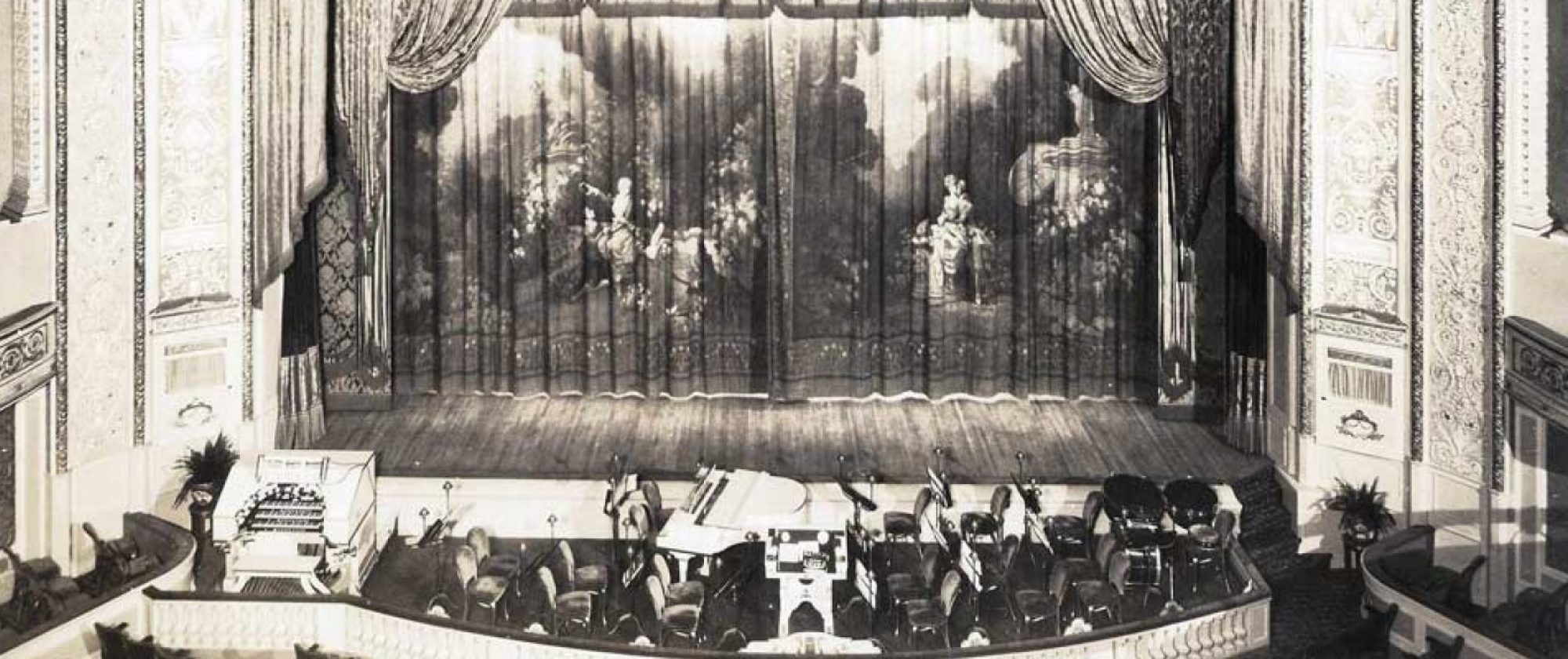Ruth Roye had to make a speech after singing three numbers in her own rough and ready style, with much facial contortion and a discreet shimmy quiver. She is inclined to overwork some of her eccentricities of manner, but she does communicate a certain responsive good will in her audiences, perhaps by her very exuberance. At any rate she marked up an unqualified individual hit on a bill that is no small feat for a single woman next to closing at close to 11 o’clock.
Florence Walton stood in the electric outside, dividing with Miss Gunning. Her two fur wraps, one of real chinchilla and one of ermine fairly screamed of staggering overhead and her diamonds echoed the same thing, the cyclorama drop that furnished the background murmured modest thrift to the extreme of shabbiness. The fact that the offering so emphasized class made this unsightly detail distressingly insistent. Young Allan Faran is a refreshingly manly dancing partner, a relief from the anemic youth of that profession, and the violinist who covers two intervals for Miss Walton’s changes is an artist. However, Miss Walton’s assistants merely furnish a framework for her sartorial orgy Miss Walton herself is put in the shade by her possessions of clothes and baubles. Although she is the same slim, graceful dancer as before.
Harry and Anna Seymour picked up the show after the intermission and got the audience settled again and in an agreeable mood. Miss Seymour’s imitation of Nora Bayes is the weakest of her bits. The others are capital. So is her clowning and “nut” stuff, guaranteed to tie up any audience of the Riverside class. Harry’s dancing is the goods. As a sample of faultless specialty, it stands out like Caruso’s high C.
Louise Gunning was No. 4 and Bobby O’Neill with “Four Queens and a Joker” closed the first part.
The O’Neill turn is a model of speed and varied specialty in an act of this sort. The brightness of the stage picture, with its golden tones, hits the audience at the rise of the curtains, and from that moment to the finale there is an unbroken succession of surprises and snappy material that holds unflagging interest. The poker bit, with the versified give and take of smart chatter, is a capital bit of comedy and the gossip incident with the three girls is another. Between these high spots there are costume changes and diversified episodes that build up an especially diverting twenty minutes.
A very good measure of entertainment was given by Davis and Darnell, next to closing, in their “Birdseed” skit. People in the rear who had even the couple previously said the act had been particularly brightened up at the opening, It ran speedy all the way, with laughs plentiful, all gotten by Frank Davis. Adele Darnell, through her repressed method, makes a corking foil for her partner. There are not many women who would so subdue themselves for the benefit of the act. Miss Darnell besides is a comely brunet who dresses well and in taste. They held up the spot, retuning to vaudeville from a production.
Another single was Mitt Collins, No. 4 with the material used by the late Cliff Gordon in make-up, mannerism and matter. His topical talk including politics did something in a way, and had Mr. Collins sufficient personality to aid his delivery he would be ever so much better off as a dialect monologist. The similarity in many spots to the talk of Collins and Senator Francis Murphy, who are doing “Dutch” topical stuff. Seems to say that both have secured their material from the same author (Aaron Hoffman) and may be appearing through an understanding. Mr. Collins should drop the horse-meat dialog, extending to the jack-ass bit. It’s offensive in its suggestions of eating horse flesh, whether culled from newspaper reports or not.
The laugh register was Mary Haynes, substituting for Kharum, opening after intermission. Miss Haynes’ material in a considerable proportion just suited the Colonial audience. Much of it isn’t very high. They thought well of her “five-an-ten-cent store clerk,” which she does well, but the best bit in the turn, and new for Miss Haynes, is about marrying a juggler. Miss Hayes took rank as a single on the small time with little polishing.
Miss Herford, with a series of four stories, entertained in parlor fashion. Her announcements of her various little stories are so frightfully trite and so lacking in any attempt to interject personality into them that they almost spoil the character studies themselves. Her present reperoire [sic] includes “The Matinee Girl,” “The Five and Ten Store,” “The Hotel Child” and “The Baby in the Street Car,” all more or less well known but still laughable.
Long Tack Sam and his sextet of Chinamen athletes placed a solid hit in the third spot. The Oriental is certainly a master showman. There is something doing for every second of the twenty-odd minutes his company holds the stage, and it is all done with a view to holding the entertainment at a pace. Speed to burn is the answer, and it was appreciated by the audience with hearty applause.
Monday night’s performance got away at eight sharp with the overture, followed by six minutes of Kinograms, after which the Johnson, Baker and Johnson trip pulled down a combination applause and laugh hit with the club juggling and hat throwing. They started the show speedily, only to have it slowed considerably by the rather dull early section of the musical routine of the Hughes Dup. The piano and cornet opening, followed by the cornet duo, seemed to take all the pep out of the proceedings. Later with the banjo routine and the popular stuff on the saxophone at the close the act pulled out with a corking applause return from the upper sections.
